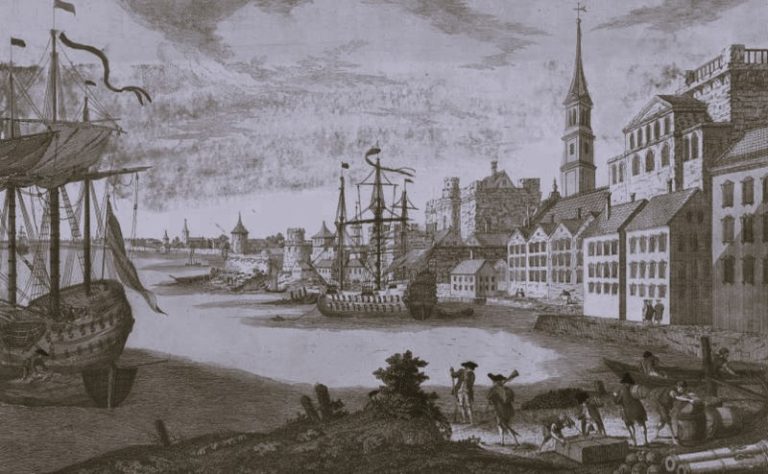

The birth of agriculture was a pivotal moment in human history.

By Jan van der Crabben
Founder and CEO
Ancient History Encyclopedia
Introduction
The ancient Near East, and the historical region of the Fertile Crescent in particular, is generally seen as the birthplace of agriculture. The first agricultural evidence comes from the Levant from where it spread to Mesopotamia, enabling the rise of large-scale cities and empires in the region.
In the 4th millennium BCE, this area was more temperate than it is today, and it had fertile soil, two great rivers (the Euphrates and the Tigris), as well as hills and mountains to the north.
The Origins of Agriculture
The birth of agriculture was a pivotal moment in human history that allowed the earliest civilizations to arise in the Fertile Crescent. Despite it being called the “Cradle of Civilization“, we now know that agriculture (and human civilization) also arose independently in other regions of the world. In central America, people domesticated maize and beans, and rice and millet and pigs were first domesticated in China; both without knowledge of earlier advances in the Near East.
The advent of agriculture occurred gradually in the hill country of south-eastern Turkey, western Iran, and the Levant, most likely because the region happened to be home to a wide range of plants and animals that lend themselves to domestication and human consumption. Fig trees were cultivated in modern-day Jordan by around 11,300 BCE. Wheat and goats were domesticated in the Levant by 9000 BCE, followed by peas and lentils in the Fertile Crescent and northern Egypt around 8000 BCE and olive trees in the Eastern Mediterranean by 5000 BCE.
Horses were domesticated in the western Eurasian steppe by 4000 BCE and spread to the Near East at some point in the late 3rd millennium BCE. Grapevines were domesticated in modern-day Iran around 3500 BCE and spread to the Levant and Egypt by 3000 BCE, marking the end of the transition to agriculture. Even today, 90% of our calories come from foods that were domesticated in this first wave of the agricultural revolution.
Agriculture started most likely because hunter-gatherers who collected grains would have had to take them back to their camp in order to separate the grain from the chaff. During this process, some seeds inevitably fall to the ground. When humans returned to the same campsite the next year, cereals would be growing around the campsite, which they harvested again, causing more seeds to fall. As the amount of cereals around the site increased, the people stayed longer to harvest, eventually turning into semi-nomads with seasonal villages, such as the Natufian culture that flourished circa 12500-9500 BCE.
Over time, some of these semi-nomads decided to stay in their agricultural villages year-round to cultivate cereals, while others would continue as nomads. By 8500 BCE, the Middle East was home to many permanent villages whose inhabitants were primarily farmers. The agricultural revolution had begun. With the increase in food production from agriculture, more human life could be sustained, populations increased, and villages turned into cities that gave rise to the Mesopotamian civilizations. The historian Gwendolyn Leick writes:
By the seventh millennium BCE, the alluvial plains began to be cultivated, and by the fourth millennium, the first cities appeared in response to the need for an efficient agricultural administration. The first documents, pictographs written on clay, concerned the allocation of labor for fields and the distribution of the products. (Leick, 6)
It is important to note that the Fertile Crescent is not the only origin point of agriculture, but that there are other places all over the world where agriculture and the domestication of animals arose without any contact with the Fertile Crescent. Scholar Yuval Noah Harari writes:
Scholars once believed that agriculture spread from a single Middle Eastern point of origin to the four corners of the world. Today, scholars agree that agriculture sprang up in other parts of the world not by the action of Middle Eastern famers exporting their revolution but entirely independently. People in Central America domesticated maize and beans without knowing anything about wheat and pea cultivation in the Middle East. South Americans learned how to raise potatoes and llamas, unaware of what was going on in either Mexico or the Levant. China’s first revolutionaries domesticated rise, millet and pigs. America’s first gardeners were those who got tired of combing the undergrowth for edible gourds decided to cultivate pumpkins. New Guineans tamed sugar cane and bananas, while the first West African farmers made African millet, African rice, sorghum and wheat conform to their needs. (Chapter 5)
Geography of the Fertile Crescent
The Fertile Crescent is an ancient geographic region comprised of three primary geographic zones:
- Mesopotamia, mostly located in modern-day Iraq, defined by the alluvial plain of the rivers Euphrates and Tigris
- Upper Mesopotamia in the foothills of the Taurus and Zagros mountains in the north
- The Levant, in modern-day Syria, Lebanon, Israel, Jordan, and Palestine on the Mediterranean seaboard to the west
Due to its varied geography, agriculture in the Fertile Crescent was highly diverse in terms of food sources, regional crop yields, and annual rainfall or irrigation variation (agricultural production could be up to 100 times higher in particularly good years). There were two types of agriculture:
- Dry agriculture without irrigation, where people mostly cultivated cereals and relied on rainfall, which was primarily practiced in the hill country of upper Mesopotamia and the Levant.
- Irrigation agriculture, which was centered in the alluvial plains of Lower Mesopotamia.

Many harvests were destroyed by drought or flooding. Artificial irrigation systems existed, but people preferred to rely on the rainy, hilly areas to ensure a more even spread of precipitation.
Irrigation was at first conducted by siphoning water from the Tigris-Euphrates river system directly onto the fields using small canals and shadufs; crane-like water lifts that have existed in Mesopotamia since c. 3000 BCE. In the drier regions, agriculture was only possible with irrigation canal systems, which are attested from the mid-1st millennium BCE, including aqueducts. The Jerwan aqueduct, the oldest known aqueduct in the world, was constructed by king Sennacherib I of Assyria between 703 and 690 BCE.

The Urartians were the masters of canal building, and many of their irrigation systems still exist. The main canals were generally created and maintained by the state, and the small ones by the farmers themselves or the local communities. Irrigated farmland, as is still the case today, was under constant threat of salination.
The soil, particularly in the flood plains in the arid climate of Babylonia and Assyria, was prone to dry up, harden, and crack. To keep the soil arable, the plow had to be used. By 3000 BCE plows were known and in wide use – many Assyrian kings boasted to have invented a new, improved type of the plow. Fields were often long and narrow, with the narrow edges bordering the canals to maximize irrigation efficiency.
Mesopotamian Crops
The main types of grain that were used for agriculture were barley, wheat, millet, and emmer. Rye and oats were not yet known for agricultural use. In Babylonia, Assyria, and the Hittite lands, barley was the main grain for human use, primarily because it is reasonably salt-tolerant (an important consideration when irrigating crops in the summer heat). It was a widely-used form of payment, and flatbread was made from barley. The smallest unit of weight was the equivalent of one grain (1/22 g). Beer and luxury foods were made from wheat and emmer. Wheat played a minor role as it was less salt-resistant than barley.
Other agricultural products include sesame (derived from the Akkadian word šamaššammu), which was widely cultivated and used to make oil. Olive oil was produced in the mountains. Flax was used to make linen cloth. Peas were cultivated in Mesopotamia, while lentils were preferred in Palestine. Figs, pomegranate, apple, and pistachio groves were found throughout the Fertile Crescent. In villages and cities of southern Mesopotamia, groves of date palms were common, often with vegetables such as onions, garlic, and cucumbers growing in the shade of the palm trees. The dates were eaten either fresh or dried, providing vital sugars and vitamins. Palmwood was also used in crafts, but not in construction.
The fields were worked with the help of oxen and a crew of laborers, which grew in size when hired hands were added to the labor force for harvest in spring. The tools used were simple, including sickles with flint blades and paddles for threshing. Wooden plows are attested from the fourth millennium BCE, and plows that sowed seeds into the ground were invented by the second millennium BCE.
Due to a Sumerian “Farmer’s Almanac” dated to 1700 BCE, we know that Mesopotamians already understood crop rotation and left fields fallow to maintain the fertility of the ground. The practice of using manure to fertilize the soil does not appear to have been known yet, though.
Harvest and Storage
Harvest required significant manpower, as there was immense time pressure on completing the harvest before winter set in. Grain was cut with a sickle, dried in shacks, and threshed by driving animals over it to “tread out” the grain. After threshing, the grain was separated from the chaff by winnowing, which was only possible in windy weather. The grain was then either stored in granaries or transported away along the waterways (sometimes even exported to other countries). In the granaries, mongooses were used to protect the store from mice (more so than cats, which were deemed unreliable).
The crop yields of agricultural economies in ancient Mesopotamia were roughly comparable to what traditional Middle Eastern farmers achieved in the 19th and early 20th centuries CE, prior to the advent of modern agricultural practices. Mesopotamia was home to one of the most plentiful agricultural systems in the ancient world.
Agricultural Societies

The societies of Mesopotamia depended largely on agriculture and access to water. Initially, the majority of the land was owned by the palace and the temples, but in the 18th century BCE, large swathes of land were privatized. The smallest unit of land was the ilkum, which was leased by the temple or the palace to a smallholding family. Even though it was legally not inheritable, de facto the same tenancy agreement continued across multiple generations.
An agricultural surplus was essential to the creation of the first cities and urban societies. Only when farmers’ crop yields exceeded their subsistence needs was it possible to sustain the needs of cities. In Mesopotamian society, rulers were very concerned with crop yields as stability and food supply were key to legitimizing their rule. Large canal networks and aqueducts were planned and managed by the state in order to ensure the supply of water to its subjects. Political continuity was paramount to the region’s economic well-being, as any break in the dynastic order could cause serious interruption of agricultural activities as well as trade, sometimes with disastrous consequences for the poor.
It is thanks to agriculture that the great city-states and empires of Mesopotamia were able to rise. Supporting a large-scale urban population and the division of labor into specialized trades was only possible by moving away from subsistence farming to an organized agricultural system that provided enough surplus to feed a large non-farming population. In that sense, agriculture laid the foundation for civilization.
Originally published by the World History Encyclopedia, 11.15.2021, under a Creative Commons: Attribution-NonCommercial-ShareAlike 3.0 Unported license.






